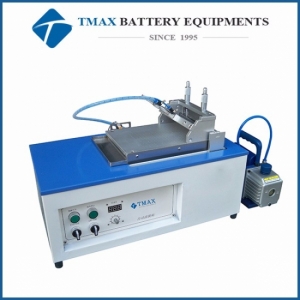- Battery Manufacturing Equipment
- Battery Laboratory Assembly Equipment
- Battery Pack Assembly Equipment
- Sodium Ion Battery Manufacturing Equipment
- Solid State Battery Assembly Line
- Dry Electrode Assembly Equipment
- Supercapacitor Assembly Equipment
- Perovskite Solar Cell Lab Equipment
- Li ion Battery Materials
- Ni / Al / Cu Metal Foam
- Customized Electrode
- Cathode Active Materials
- Anode Active Materials
- Coin Cell Parts
- Lithium Chip
- Cylindrical Cell Parts
- Battery Current Collectors
- Battery Conductive Materials
- Electrolyte
- Battery Binder
- Separator and Tape
- Aluminum Laminate Film
- Nickel Strip/Foil
- Battery Tabs
- Graphene Materials
- Cu / Al / Ni / Stainless steel Foil
- Battery Laboratory Equipment
- Li ion Battery Tester
- Battery Safety Tester
- Battery Material Tester
- Film Coating Machine
- Rolling Press Machine
- Electrode Mixer
- Coin Cell Crimping Machine
- Coin Cell Electrode Disc Punching
- Pouch Cell Sealing Machine
- Pouch Cell Stacking Machine
- Pouch Cell Forming Machine
- Pouch Cell Ultrasonic Welder
- Pouch Cell Electrode Die Cutter
- Cylinder Cell Sealing Machine
- Cylinder Cell Grooving Machine
- Electrode Slitting Machine
- Cylinder Cell Winding Machine
- Cylinder Cell Spot Welding Machine
- Electrolyte Filling
- Type Test Cell
- Other Battery Making Machine
- NMP Solvent Treatment System
- Vacuum Glove Box
- Lab Furnaces
- Ball Mill
- Hydraulic Press
- Laboratory Equipment
- 2024-05-28
A vacuum coating machine, also known as a vacuum deposition system, is a specialized equipment used for applying thin layers of various materials onto a substrate surface in a vacuum environment. These machines are integral to a wide range of industries, including electronics, optics, automotive, aerospace, and packaging. Here's an overview of vacuum coating machines:
Principle of Operation:
Vacuum coating machines utilize physical vapor deposition (PVD) or chemical vapor deposition (CVD) processes to deposit thin films or coatings onto substrates. The key principle involves the vaporization or dissociation of coating materials in a vacuum chamber, by their condensation onto the substrate surface.
Components and Configuration:
Vacuum Chamber: The heart of the vacuum film applicator coater, where the deposition process occurs under controlled vacuum conditions.
Evaporation Sources: These can be resistance heaters, electron beam guns, or sputtering targets, used to vaporize or sputter coating materials.
Substrate Holder: Holds and positions the substrate(s) within the vacuum chamber during the coating process.
Process Control System: Manages parameters such as vacuum level, deposition rate, temperature, and gas flow, ensuring precise control over the coating process.
Film Thickness Monitor: Monitors the thickness of the deposited film in real-time, enabling accurate control and uniformity of the coating thickness.
Types of Vacuum Coating Processes:
Physical Vapor Deposition (PVD): In PVD, coating materials are evaporated or sputtered from solid sources and then condensed onto the substrate surface. Common PVD techniques include thermal evaporation, electron beam evaporation, and sputter deposition.
Chemical Vapor Deposition (CVD): In CVD, precursor gases react or decompose on the substrate surface to form a thin film. This process is commonly used for growing epitaxial layers, thin films, or coatings with precise control over composition and structure.
Applications:
Doctor blade coater are employed in a wide range of applications, including:
Optical Coatings: Used for anti-reflection coatings, reflective coatings, optical filters, and mirror coatings in lenses, camera lenses, eyeglasses, and optical components.
Barrier Coatings: Applied to packaging materials such as food packaging, flexible electronics, and display screens to provide moisture barrier, gas barrier, and protection against corrosion.
Decorative Coatings: Used for decorative finishes on consumer products, automotive parts, architectural surfaces, and jewelry.
Thin Film Solar Cells: Employed for depositing thin films of photovoltaic materials onto solar cell substrates, enhancing light absorption and efficiency.
Semiconductor Manufacturing: Utilized for deposition of thin films in semiconductor devices, including metallization layers, dielectric layers, and diffusion barriers.
Advantages:
Precise control over film thickness, composition, and properties.
High uniformity and reproducibility of coatings.
Compatibility with a wide range of substrate materials and shapes.
Low environmental impact compared to traditional coating processes.
Enables deposition of thin films with tailored optical, electrical, and mechanical properties.
Future Trends:
Advancements in vacuum coating technology are focused on improving deposition rates, enhancing coating uniformity, reducing production costs, and developing novel materials for advanced applications. Additionally, there is growing interest in integrating vacuum coating machines with automation, robotics, and Industry 4.0 technologies for increased efficiency and productivity.
In summary, vacuum coating machines play a vital role in modern manufacturing processes, enabling the production of functional coatings with tailored properties for diverse applications in electronics, optics, energy, and beyond. As technology continues to evolve, vacuum coating is poised to remain a cornerstone of surface engineering and materials science.

-
 Automatic Cylinderical Battery Electrode Winding Machine
Read More
Automatic Cylinderical Battery Electrode Winding Machine
Read More
-
 100-200L Double Planetary Vacuum Mixing Machine for Lithium Battery Slurry
Read More
100-200L Double Planetary Vacuum Mixing Machine for Lithium Battery Slurry
Read More
-
 Large Heating Roller Press Machine Calender For Li ion Battery Production Line
Read More
Large Heating Roller Press Machine Calender For Li ion Battery Production Line
Read More
-
 Large 3 Rollers Battery Electrode Film Intermittent Coating Machine for Pilot Production Line
Read More
Large 3 Rollers Battery Electrode Film Intermittent Coating Machine for Pilot Production Line
Read More
-
 512 Channel 5V3A Battery Grading Machine/Battery Charge Discharge Machine Tester
Read More
512 Channel 5V3A Battery Grading Machine/Battery Charge Discharge Machine Tester
Read More
 ru
ru

 cindy@tmaxcn.com
cindy@tmaxcn.com David@battery-equipments.com
David@battery-equipments.com Wechat:13506084915
Wechat:13506084915